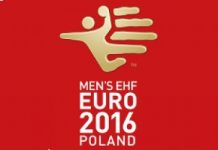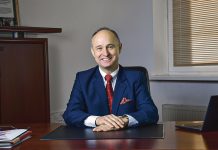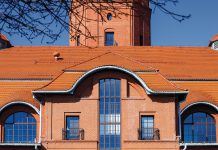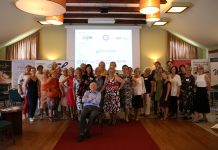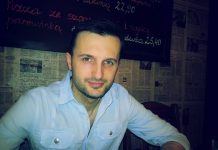The plane approaches to landing at Phnom Penh International Airport, just one more slight turn left, a glance at the city, today wrapped in the play of light, once a topic of my MA thesis. 30 years ago it seemed a distant land, located thousands of light-years away. Today it is just a 6 hours’ flight from Seoul on South Korean Asiana Airlines.
I try to compare these places with the ones I have known from newspapers and movies. Today the airport is located exactly in the place of the former Pochentong Airport, above which the famous control tower hovered. To enter Cambodia, you need to have an entry visa, which can be purchased at the airport. A few more formalities and I am outside. December is a good month to travel in the tropics. The temperature hits 27 degrees Celsius at 1 a.m. I buy a SIM card for $5 to be in contact with the world for these several days and to have access to useful navigation apps.
I check in at Sokha Phnom Penh Hotel with a beautiful view of the Mekong and the centre of Phnom Penh. For $100 I get a 100 m2 room with a delicious breakfast. The night passes quickly, in the morning a driver booked in advance arrives in an off-road Lexus and off we go.
Cambodia before Khmer Rouge
The once French Protectorate, the Kingdom of Cambodia regained independence in 1953. This small, but quite prosperous country lived in the shadow of the war waged in South Vietnam since the early 1960s. At the end of March
Khmer Rouge Ideology
Pol Pot, Ieng Sary, Khieu Samphan, Son Sen, Nuon Chean – these are just a few of many ominous names of people who in the name of their ideological obsession murdered
What did Khmer Rouge want? In part, they were Maoists, Marxists, Stalinists, nationalists, and racists. Everything boiled down to one goal – break up with the western imperialism, recreate their own culture, and create a purely communist society, capable of rebuilding
To this end it was necessary to forget the past completely, to introduce year zero which marked the beginning of the new era of bliss. Cities were the devil’s den – city dweller has the spirit of the imperialist western decadence, city dweller is delicate, and at the same time susceptible to western influences. Therefore – cities had to be destroyed. Phnom Penh with
Intellectuals, doctors, professors, people speaking foreign languages were hunted down and killed, and spectacles became a symbol of imperialism. The new classless society was deprived of the right to have private property. People had to work 14 hours a day on rice fields and then they had to attend indoctrination briefings. There was an ideological struggle for increasing the production of rice three times as it was to be exported and the proceeds were to be used for purchasing advanced technologies, which in turn were to be autarkically implemented by new specialists educated in the country.
All this resulted in hunger. The Communist Party of Kampuchea, ruling under the name of Organisation, with comrade Pol Pot, the main ideologist and leader of the party and of the state, concluded it was
Tuol Sleng and Chueng Ek
Phnom Penh is crowded, with many luxury cars and motorbikes, which allow to squeeze in between cars stuck in the traffic jam. I go to the city centre, to the monument commemorating the country’s independence, which Prince (or more accurately King) Sihanouk managed to negotiate in 1953. On the

After a short conversation with Mr Yuk Chhang, director of the Centre, I understand it is a stigma, difficult to get rid of even after several decades. Straight from the
How many books present photographs from this place? I can’t even remember. The only thing that is truly striking is
A word about S-21. It used to be a secondary school, where history was taught by Professor Saloth Sar, or Pol Pot. Children liked Professor Sar, who always wore tinted glasses and had a phenomenal memory for statistics and facts. Who could have guessed that years later he would transform this place into a torture chamber, where many good Khmer Rouge comrades and alleged enemies to the people and the system would lose their lives.
S-21 used to be situated on the outskirts of the city; today, absorbed by the metropolis, it sits in the middle of one of the arterial roads like the devilish castle of Dracula.
The classrooms on the ground floor were transformed into torture chambers. In the centre of each of
Chueng Ek
The ones who survived the investigation, after confessing to some absurd crimes were transferred with a death sentence to Chueng Ek, a former Chinese graveyard located on the outskirts of the city. The prisoners, shackled and kept inside, were dragged out one after another more or less every 10 minutes. They were led to the edge of a previously dug

I approach a beautiful stupa, in which symbolically several dozen skulls with signs of terrible wounds have been placed. They are arranged according to their age. Partially decomposed clothes make the greatest impression – who wore them, how were they ripped off from the victims? We shall never know.

The Killing Fields
My interest in Cambodia derives from the film under this very title, which was produced by Roland Joffe. What is particularly shocking, however, is the fact that the killing fields are very common in Cambodia. Chueng Ek is not the biggest one. The biggest killing field is located near Siem Reap, a place frequently visited by tourists from all over the world wishing to see the wonderful monuments of the Khmer Empire in Angkor.
The country deprived of cities was peppered with cooperatives, where people worked like slaves, supposed to build a wonderful, great Cambodia. And since traitors and saboteurs were everywhere, each cooperative was constantly under surveillance. Thousands of people would disappear at night or directly from the rice fields.
Pol Pot’s Grave
We go to Anlong Veng, a town located near the border with Thailand. The jungle where the leader of Khmer Rouge was hiding is no longer there. The land on the other side of a great motorway had been sold to Thai businessmen, who built a huge casino there. Pol Pot, once commanding guerrilla troops of nearly 100 thousand soldiers, was still able to wage a war, this time with
Even today you can find naïve individuals who repeat like a mantra that had it not been for Vietnamese agents, Cambodia of Pol Pot would still be a prosperous communist state constituting an excellent example of development and prosperity for others to follow. I dare to doubt it, I can’t even comprehend it! But then, I can’t comprehend how come such notorious criminals never answered for their crimes. How is it possible that Khmer Rouge

Paradoxically, people losing their fortunes in the casino often visit Pol Pot’s grave (the place of his cremation, to be precise), where they light
My word! Is it some sort of a remedy, to ask an orthodox communist for help in winning in an imperialist casino? That’s all you can do… It is sad, isn’t it? But what the heck…

Piotr Ostaszewski







